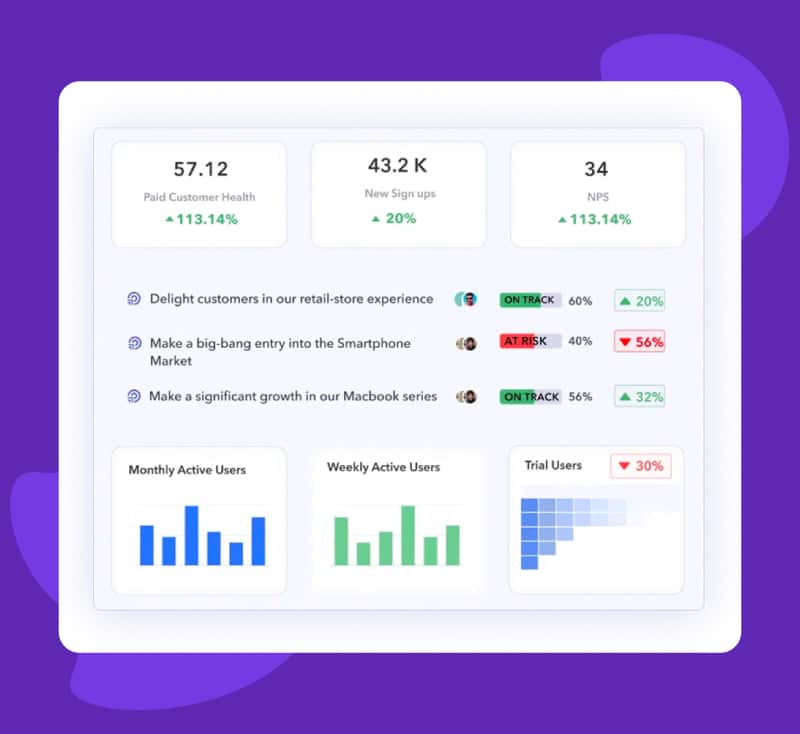Effective performance management is essential for driving employee engagement, productivity, and overall organizational success. At the heart of any successful performance management system are clear goals and objectives that align individual, team, and organizational priorities.
In this blog post, we will explore the key principles of performance management that underpin effective goal-setting and employee development. By following these proven principles, organizations can create a transparent, accountable, and motivating environment that supports employee growth and delivers measurable business results.
Key Takeaways
👉 Performance management is a continuous process for employee and company success.
👉 Key principles include clear goal setting, regular feedback, objective measurement, development opportunities, and more.
👉 Recognize and reward good work, involve employees in the process, and align goals with the company’s mission.
👉 Use data to gain insights and customize your approach for each employee.
👉 Train managers to provide effective coaching and feedback.
What is Performance Management?
Performance management goes beyond ticking boxes. It’s like putting together a puzzle to make everyone work better, and the company shines.
Basically, it’s a step-by-step plan that starts with clear goals, monitors progress, and gives helpful advice to help people grow and do their best. It’s all about ensuring that both employees and the company succeed together.
🔑 10 Key Principles of Performance Management
1. Clear Goal Setting
Clear goal setting is a cornerstone of effective performance management, and the OKR (Objectives and Key Results) framework is a powerful tool to achieve this. The OKR methodology emphasizes setting ambitious objectives and defining measurable key results to achieve those objectives.
Clearly defined OKRs provide direction, ensuring everyone understands their role in contributing to the organization’s broader mission. Collaborating with employees to set OKRs fosters engagement and accountability. Regularly reviewing and adjusting these OKRs based on evolving priorities enhances agility and goal alignment.
2. Continuous Feedback
Continuous feedback entails ongoing discussions about performance, progress, and areas for improvement. This principle should be embedded in regular one-on-one meetings and project evaluations.
When given constructively and frequently, feedback nurtures growth, ensures alignment, and prevents surprises during formal reviews. Open dialogues encourage open communication channels and foster a culture of continuous improvement. Positive reinforcement reinforces exceptional work, while constructive criticism provides actionable insights for enhancement.
3. Objective Measurement
Objective measurement involves using quantifiable data and metrics to assess performance. This principle is best employed during periodic performance reviews and project assessments.
Objective metrics eliminate biases, providing a fair and accurate evaluation of achievements. Well-defined performance metrics, tracked consistently, ensure transparency and accountability. This data-driven approach facilitates well-informed decisions, identifies trends, and showcases areas requiring attention.
4. Development and Training
Development and training encompass identifying skill gaps and providing relevant learning opportunities. This principle is integral throughout an employee’s journey, ensuring their skills align with organizational demands. In a survey by Gallup, 87% of employees considerered professional growth and development opportunities as a top priority when choosing a job.
Regular skills assessments pinpoint areas for growth, enabling tailored training programs to bridge gaps. Investing in employees’ development enhances job satisfaction, increases retention rates, and propels organizational change.
What is a Skills Matrix?
A skill matrix is a tool that maps employee skills and proficiency levels, helping organizations identify strengths, weaknesses, and areas for development.
This fosters a more strategic workforce by ensuring they have the right people with the right skills for success.
Suggested Read: Skills Matrix: Definition, Benefits, and How to Create One
5. Recognition and Reward
Recognition and rewards involve acknowledging exceptional performance through praise, bonuses, or promotions. Celebrating achievements during monthly or quarterly reviews and upon reaching milestones is key.
Meaningful recognition fuels motivation, strengthens morale, and fosters a culture of excellence. A strategic recognition program appreciates both small victories and significant milestones, demonstrating appreciation and encouraging consistent high performance.
6. Employee Involvement
Employee involvement refers to actively engaging employees in goal-setting, feedback, and performance discussions. This principle should be ingrained in performance planning, ongoing feedback sessions, and reviews.
Empowering employees to share their perspectives on goals, progress, and areas of improvement fosters a sense of ownership and engagement. When employees feel their voices are heard and valued, their commitment to achieving goals amplifies.
Pssst! Need some inspiration for setting performance management goals? Check out our blog post!
7. Alignment with Organizational Goals
Alignment with organizational goals ensures that individual objectives resonate with the company’s overarching mission. This principle begins during the initial goal-setting phase and continues periodically.
Communicating company goals and strategies consistently helps employees see the connection between their roles and the bigger picture. Aligning personal objectives with organizational missions channels efforts toward shared objectives, promoting synergy and unity.
With Peoplebox, you can enable your employees to see how their work impacts the organizational objectives.

Also read: 6 Steps for OKR Alignment within Your Teams
8. Data-Driven Insights
Data-driven insights involve using performance data to gain valuable insights. These insights are crucial during periodic performance reviews and strategic decision-making processes.
Utilizing data provides informed insights into performance trends, strengths, and areas for improvement. Analyzing data enhances evidence-based decision-making, enabling the identification of strategies for both individual employee development and overarching organizational success.
9. Customization
Customization tailors performance management approaches to individual roles and needs. This principle should be applied during the goal-setting process and throughout performance discussions.
Assessing respective roles, strengths, and areas for growth ensures that goals, feedback, and training plans are tailored to individual needs. Customization enhances relevance, making performance management strategies resonate with each employee’s unique responsibilities and objectives.
10. Managerial Training
Managerial training involves equipping managers with coaching skills for effective feedback and guidance. This principle should be integrated into leadership development programs and ongoing administrative training initiatives.
Effective managers drive performance, foster growth, and facilitate open communication. Training on active listening, constructive feedback, and coaching techniques empowers managers to lead their teams effectively, enhancing performance management outcomes and overall organizational success.
Integrating these key principles of performance management practices into your organization transforms it into a strategic tool. These principles, when embraced, foster a culture of growth, engagement, and achievement within your workforce.
🥨 Empower Performance Excellence with Peoplebox
Adopting the right tools can mean the difference between ordinary and outstanding results for your organization. As we’ve explored the key principles of performance management, it’s clear that aligning these principles with a cutting-edge platform is essential for maximizing their impact.
This is where Peoplebox steps into the spotlight.
Imagine streamlining performance reviews, including the intricate 360-degree evaluations, within weeks instead of months. With Peoplebox’s integration with Slack, you can effortlessly navigate the entire performance review process.
Peoplebox offers a holistic approach that seamlessly connects essential elements like goals (OKRs), compensation, feedback, 1:1 meetings, and reviews. The best part? No extensive training is required. Its user-friendly interface ensures that your team can dive in and harness its power without missing a beat.







